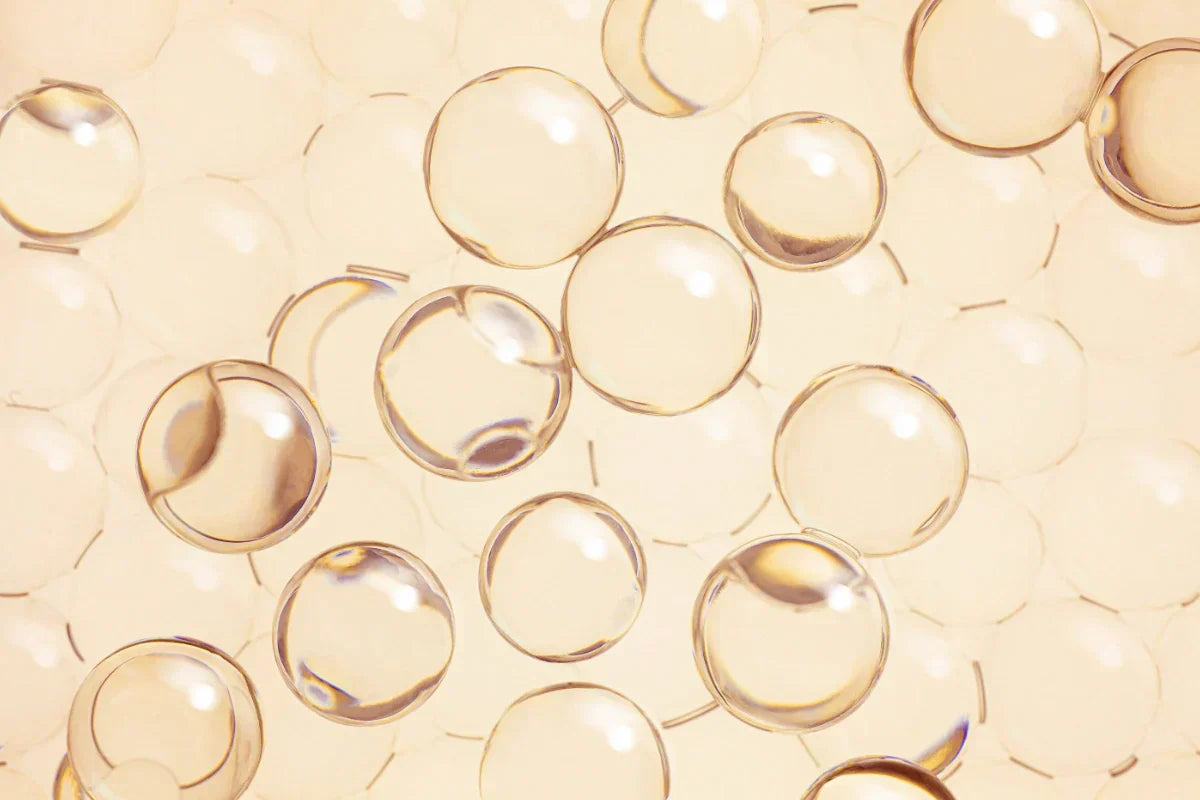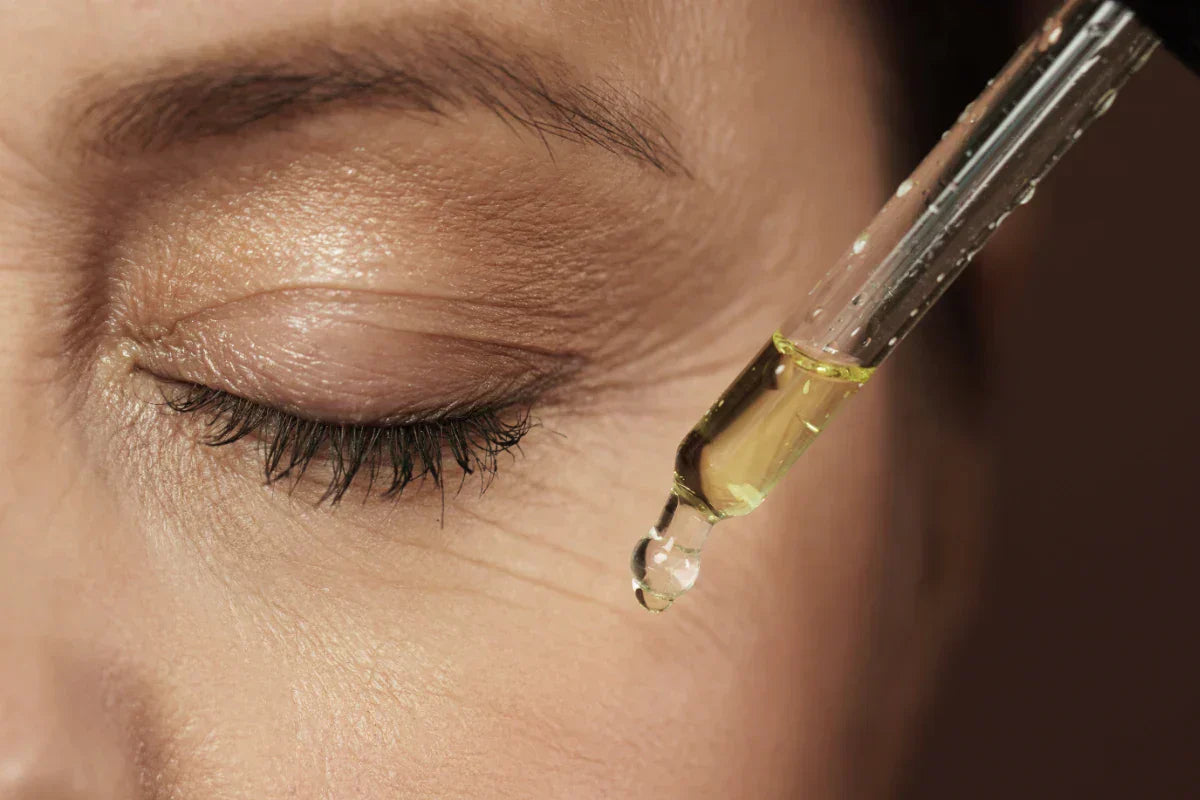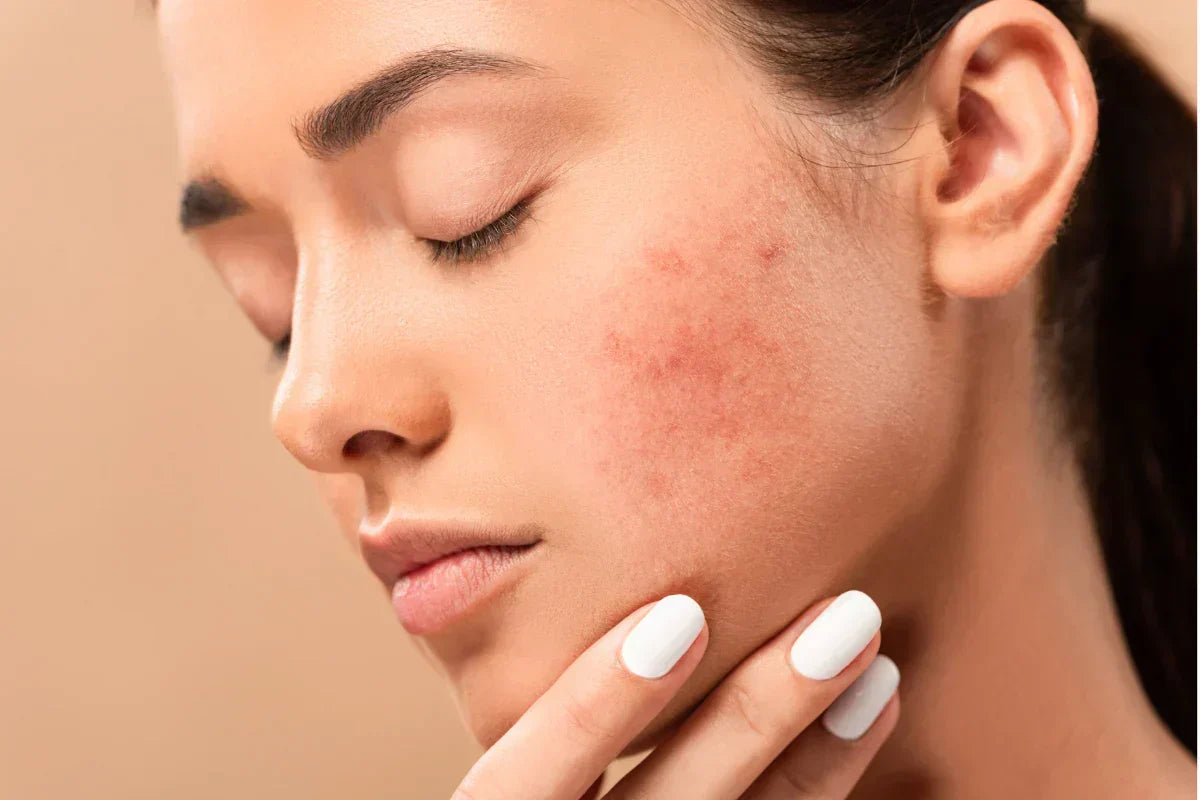Your skin’s ability to stay hydrated and protected depends on a crucial component you might not know about: ceramide molecules. These naturally occurring lipids make up 30-50% of your skin’s outer layer, forming a protective barrier that locks in moisture and shields against environmental damage. As we age, our skin’s natural ceramide production declines, leading to dryness, irritation, and compromised skin barrier function that many people struggle with daily.
Understanding ceramides and how they work can transform your approach to skin care. These waxy fatty acids aren’t just another trending ingredient; they’re scientifically proven therapeutic agents that support healthy skin function at the cellular level. Whether you’re dealing with dry skin, managing skin conditions like eczema, or simply want to maintain optimal skin health, ceramides offer evidence-based benefits that can make a real difference in your skin care routine.
What Are Ceramides?
Ceramides are naturally occurring lipids that make up 30-50% of the skin’s outer layer, specifically the epidermis and stratum corneum. These waxy fatty acids form a protective barrier that locks in moisture and prevents water loss, making them essential for maintaining healthy skin hydration and protecting against environmental damage.
The term ceramide comes from the Latin words cera (wax) and amide, reflecting their waxy nature and chemical structure. These molecules consist of sphingosine and a fatty acid linked by an amide bond, making them crucial components of the skin’s natural moisturizing systems. Ceramides play a vital role not just in barrier function, but also in cellular signaling that influences skin cell differentiation, proliferation, and even cell death processes.
Natural ceramides decline with age, leading to dryness, irritation, and compromised skin barrier function. This natural aging process significantly affects ceramide levels, which is why many people notice their skin becoming drier and more sensitive over time. The outermost layer of skin relies heavily on adequate ceramide levels to maintain its protective properties and keep skin moisturized.
Synthetic ceramides in skincare products help replenish and restore the skin’s natural lipid barrier. These lab-created versions are designed to mimic the structure and function of natural ceramides, providing similar benefits when applied topically. Research in cosmetic dermatology has demonstrated that synthetic ceramides can effectively support the skin's barrier function and enhance overall skin health when used consistently.
They are essential for maintaining healthy skin hydration and protecting against environmental damage. Beyond basic moisturization, ceramides help protect against environmental changes, pollution, and other external stressors that can compromise skin function. This makes them particularly valuable for people living in harsh climates or urban environments.
Ceramide Synthesis and Skin Function
Ceramide synthesis is a crucial process that maintains your skin's health, hydration, and resilience. In the skin, ceramides are formed when a fatty acid links with a sphingoid base, a process orchestrated by specialized enzymes and lipid molecules within skin cells. This natural production of ceramides is vital for maintaining the skin’s barrier function, as it ensures that the outermost layer remains intact and able to lock in moisture.
As ceramides accumulate in the skin, they help prevent dryness by reducing water loss and supporting overall skin hydration. When ceramide synthesis slows down, whether due to aging, environmental stress, or certain skin conditions, the skin’s barrier becomes compromised. This can lead to dry skin, increased sensitivity, and a higher risk of irritation or infection.

Ceramides play a key role in skin function by supporting the structure and flexibility of the skin’s lipid matrix. When you incorporate ceramide skin care products into your daily routine, you’re helping to replenish these essential molecules, supporting your skin’s natural defenses, and promoting a smoother, healthier complexion. Understanding the importance of ceramide synthesis can empower you to choose skin care products that actively support your skin’s needs, especially if you’re prone to dryness or other skin conditions.
By focusing on products that enhance ceramide levels, you can help maintain optimal barrier function and keep your skin looking and feeling its best. Whether you’re aiming to prevent dryness or address existing skin concerns, supporting ceramide synthesis is a smart strategy for anyone committed to healthy skin care.
Types of Ceramides in Skincare
There are 12 different types of ceramides identified in human skin, labeled Ceramide 1 through Ceramide 12. Each type has specific molecular structures and functions, though they all contribute to the skin's overall barrier function and health. Research in clinical dermatology has identified and characterized the different types of ceramides and their distinct roles in maintaining skin integrity.
Ceramides 1, 3, and 6-II are the most commonly used in over-the-counter skincare products. These specific types of ceramides have been extensively studied and proven effective in skin care formulations. The cosmetic ingredient review has established their safety and efficacy for topical application, making them popular choices for manufacturers.
Ceramide EOP (Ceramide 1) contains linoleic acid and helps bind lipid layers for barrier repair. This particular ceramide is especially effective because linoleic acid is one of the essential fatty acids that skin needs but cannot produce on its own. When ceramide levels are adequate, this binding process helps create a more robust and effective skin barrier.
Ceramides 2 and 3 are frequently featured in facial moisturizers and neck care products. These ceramides are particularly well-suited for facial skin care because they’re gentle yet effective at improving hydration and reducing irritation. Many high-quality moisturizers combine these ceramides with other beneficial ingredients, such as cholesterol and free fatty acids.
Decreased levels of ceramides 1-6 are particularly linked to dry skin and skin disorders. Conditions such as eczema, psoriasis, and other skin conditions often exhibit significantly reduced ceramide levels in affected areas. This connection has led researchers to focus on ceramide replacement therapy as a treatment approach for various skin disorders.
The specific ceramide types work together to create what scientists refer to as ceramide accumulation in the stratum corneum, which is crucial for maintaining proper barrier function. This accumulation process involves the synthesis of ceramides within skin cells, followed by the organization of these lipids into protective layers that prevent water loss and block harmful substances from penetrating the skin.
Natural Ceramides and Skin Care
Natural ceramides are a cornerstone of the skin’s outer layer, the stratum corneum, where they play a critical role in maintaining the skin’s barrier function. The body produces these lipid molecules, which are essential for maintaining the skin's moisture, softness, and protection from environmental damage. Natural ceramides help lock in moisture, preventing water loss and shielding the skin from irritants and pollutants.
Beyond their presence in the skin, natural ceramides can also be found in certain foods, such as sweet potatoes, which are being explored as potential sources for skin care products. When included in topical formulations, natural ceramides can reinforce the skin’s barrier, making them a highly effective ingredient for supporting overall skin health.
While synthetic ceramides are commonly used in cosmetic products to mimic the effects of natural ceramides, many high-end skin care brands prefer natural ceramides for their superior compatibility and effectiveness. Natural ceramides are often considered more effective in restoring the skin’s barrier and maintaining long-term moisture, making them a sought-after ingredient in premium skincare products.
Choosing skin care products that feature natural ceramides can help you maintain a healthy, resilient outer layer, ensuring your skin stays hydrated and protected against daily environmental stressors.
Key Benefits of Ceramides for Skin Health
Ceramides restore and strengthen the skin’s protective moisture barrier, addressing one of the most fundamental aspects of skin health. When the barrier function is compromised, skin becomes vulnerable to irritation, infection, and accelerated aging. By replenishing ceramide levels, you’re essentially rebuilding the foundation that keeps your skin healthy and resilient.
The molecules enhance skin hydration and reduce transepidermal water loss, a scientific term for moisture evaporation through the skin. This process is crucial because when skin loses too much water, it becomes dry, flaky, and more prone to developing issues. Ceramides create a protective seal that helps keep moisture locked in where it belongs. This moisture retention helps keep the skin soft, smooth, and healthy.
These lipids soothe dry skin and support overall skin resilience, making them particularly valuable for people with sensitive or reactive skin types. Unlike some skin care ingredients that can cause irritation, ceramides are naturally compatible with skin because they’re identical to what your skin already produces. This compatibility means they’re less likely to cause adverse reactions.
Ceramides help manage skin conditions like eczema and psoriasis by replenishing deficient ceramide levels. Research published in the International Journal of Molecular Sciences has shown that people with these conditions often have significantly decreased ceramide concentrations in their skin. Topical application of ceramides can help restore normal barrier function and reduce symptoms.
They protect against environmental stressors and prevent premature aging by maintaining the skin’s natural defense mechanisms. Environmental damage from pollution, UV radiation, and harsh weather can accelerate the breakdown of natural ceramides. By supplementing with ceramide skin care products, you’re providing extra protection against these aging factors.

Ceramides support healthy skin cell function and barrier integrity at the molecular level. This support includes facilitating proper cell turnover, maintaining optimal hydration levels, and ensuring that the skin’s natural repair processes can function effectively. The result is skin that not only looks better but also functions better over time.
Some studies have even suggested connections between ceramide function and broader health markers, such as insulin resistance; however, more research is needed to fully understand these relationships. What’s clear is that ceramides and skin function are intimately connected, making them essential for anyone serious about maintaining healthy skin long-term.
Ceramides and Skin Care Ingredients
Ceramides work best when combined with other skin care ingredients that support the skin’s natural moisturizing systems. Moisturizers that blend ceramides with fatty acids and cholesterol create a powerful formula that helps lock in moisture and reinforce the skin’s barrier. These combinations mimic the skin’s own lipid structure, making them especially effective at keeping skin hydrated and healthy.
When selecting a skincare product, it’s essential to consider the types of ceramides included and how they interact with other ingredients. Some products feature multiple types of ceramides to target different aspects of barrier repair, while others may focus on a single type for a more targeted approach. Pairing ceramides with other skin care ingredients, such as hyaluronic acid, niacinamide, or botanical extracts, can further enhance their benefits, providing comprehensive support for skin health.
Understanding how ceramides interact with other ingredients can help you build a skin care routine that addresses your unique needs. By selecting products that combine ceramides with complementary ingredients, you can optimize moisture retention, enhance barrier function, and achieve smoother, healthier-looking skin.
How to Use Ceramides in Your Skincare Routine
Apply ceramide moisturizers to damp skin within 3 minutes after cleansing for optimal absorption. This timing is crucial because slightly damp skin helps create the ideal environment for ceramide penetration. The moisture on your skin acts as a delivery system, helping the ceramides integrate more effectively into your skin’s natural lipid structure.
Use ceramide products as the last step in your routine to seal in moisture and other active ingredients. This application order ensures that any serums, treatments, or other skin care ingredients you’ve applied get locked in by the ceramide barrier. Think of ceramides as creating a protective seal over your entire skin care routine.
Combine ceramides with complementary ingredients, such as hyaluronic acid and cholesterol, for enhanced benefits. These combinations work synergistically, hyaluronic acid draws moisture to the skin, cholesterol supports barrier structure, and ceramides lock everything in place. Many effective formulations incorporate all three ingredients working in tandem.
Select products containing anti-inflammatory agents to enhance ceramide absorption and improve skin tolerance. Ingredients like niacinamide or gentle botanical extracts can help calm skin and create better conditions for ceramide uptake. This is particularly important for people with sensitive skin or existing skin conditions.
Patch test new ceramide products before full application to ensure skin compatibility. While ceramides are generally well-tolerated, individual reactions can vary, especially if you have very sensitive skin or multiple allergies. Test new products on a small area of skin for 24-48 hours before incorporating them into your full routine.
Product Selection and Usage Tips
Look for opaque, airtight packaging to preserve ceramide stability and efficacy. Ceramides can degrade when exposed to light and air, which reduces their effectiveness over time. Products in clear containers or jars that require frequent opening may not maintain their potency as well as those in pump bottles or tubes.
Check expiration dates as ceramides can degrade over time when exposed to light and air. Unlike some skin care ingredients that remain stable for years, ceramides have a more limited shelf life once formulated into products. Using expired ceramide products won’t harm your skin, but they may not provide the expected benefits.
Select products tailored to your specific skin type and concerns for optimal results. Someone with oily skin might prefer a lightweight ceramide serum, while those with dry skin might need a richer cream formulated with ceramides. Consider your skin’s unique needs when choosing between different product formats.

Consider consulting a dermatologist for personalized recommendations on ceramide products. A skin care professional can assess your specific skin conditions and recommend the most appropriate ceramide formulations for your needs. This is particularly valuable if you have complex skin issues or haven’t had success with over-the-counter options.
Allow 3-6 months for visible anti-aging effects as skin cell turnover takes time. While you may notice improved hydration and smoother skin relatively quickly, the more significant benefits of ceramides, like improved barrier function and reduced signs of aging, develop gradually as your skin’s natural renewal processes incorporate the ceramides into new skin cells. Regular use of ceramide products can also help support the skin's natural production of ceramides over time, further enhancing long-term skin health.
|
Application Timing |
Product Type |
Best For |
|---|---|---|
|
Morning |
Lightweight ceramide serum |
All skin types, under sunscreen |
|
Evening |
Rich ceramide moisturizer |
Dry to normal skin types |
|
After cleansing |
Ceramide toner |
Preparation for other products |
|
Weekly |
Ceramide face mask |
Intensive barrier repair |
Other Skin Care Ingredients and Barrier Function
In addition to ceramides, other essential skin care ingredients, such as fatty acids and cholesterol, are crucial for maintaining the skin’s natural barrier function. Fatty acids help repair and strengthen the barrier, while cholesterol works to lock in moisture, ensuring the skin stays hydrated and soft. When these ingredients are combined with ceramides in a skin care product, they create a synergistic effect that supports healthy skin and enhances overall barrier function.
Many skin care products also contain therapeutic agents specifically designed to address conditions such as dry skin or itchy skin. These formulations can help restore ceramide levels and provide relief for those struggling with certain skin conditions. By understanding how these ingredients work together, you can develop a skin care routine that not only treats symptoms but also addresses the underlying causes of barrier dysfunction.
Choosing products that feature a balanced blend of ceramides, fatty acids, cholesterol, and other skin care ingredients can help you maintain optimal skin hydration, prevent dryness, and support long-term skin health. Whether you’re managing a skin condition or simply want to keep your skin healthy and resilient, these ingredients are key to building an effective, science-backed skin care routine.
Ceramides Beyond Facial Skincare
Body lotions containing ceramides offer comprehensive hydration and barrier protection, extending their benefits beyond facial skin care. Your body’s skin has the same barrier function needs as facial skin, but it’s often neglected in skin care routines. Ceramide body products can help address issues like dry patches, rough texture, and overall skin dryness that many people experience, especially during colder months.
Hair care products containing ceramides help strengthen damaged hair and restore moisture to hair strands. While hair is technically dead tissue, the hair shaft can benefit from ceramide treatments that help seal the hair cuticle and reduce moisture loss. This is particularly beneficial for people with chemically treated, heat-damaged, or naturally dry hair.
Ceramide-infused shampoos and conditioners repair dry, brittle hair strands by filling in microscopic gaps in the hair cuticle. This treatment approach helps hair retain moisture better and appear shinier and healthier. The same principles that make ceramides effective for skin barrier repair apply to hair care, though the mechanisms are somewhat different.

Face masks with ceramides offer intensive barrier repair and 24-hour moisturization for those times when your skin needs extra support. These treatments typically contain higher concentrations of ceramides than daily-use products, making them ideal for addressing acute dryness or recovering from environmental stress or harsh treatments.
Serums and toners with ceramides offer lightweight hydration for daily use, making them particularly appealing to individuals with oily or combination skin who seek ceramide benefits without heavy textures. These products often combine ceramides with other skin care ingredients, such as niacinamide or hyaluronic acid, to create comprehensive treatment formulations.
Some innovative products even incorporate ceramides into unexpected formats, such as lip balms and eye creams. The delicate skin around your eyes and lips can particularly benefit from ceramide support, as these areas are often the first to show signs of barrier dysfunction and aging.
Even dietary supplements containing ceramides derived from sources such as sweet potatoes are being researched, although topical application remains the most proven delivery method. The American Journal of Clinical Research has published studies on oral ceramide supplements; however, further research is needed to establish their effectiveness compared to topical products.
The skincare world continues to discover new applications for ceramides as our understanding of their role in skin health expands. From traditional moisturizers to cutting-edge cosmetic formulations, ceramides remain one of the most versatile and effective skin care ingredients available to consumers.
Research from institutions like New York University School of Medicine continues to explore new applications for ceramides in both cosmetic and therapeutic contexts. This ongoing research suggests that our understanding of ceramides and their potential applications is still evolving, promising even more innovative products in the future.
Understanding that ceramides naturally occur throughout your body helps explain why they’re so well-tolerated and effective across different applications. Whether you’re addressing facial skin concerns, body dryness, or hair damage, ceramides offer a science-backed solution that works with your body’s natural processes rather than against them.
The versatility of ceramides makes them valuable additions to comprehensive skin care routines that address multiple concerns simultaneously. By incorporating ceramide products into various aspects of your routine, you’re supporting your skin’s natural barrier function from multiple angles, potentially achieving better results than focusing on just one area.
As research continues to reveal new insights about ceramides and their role in skin health, we can expect to see even more innovative applications and formulations. The key is understanding how to use these products effectively and choosing high-quality formulations that deliver ceramides in bioavailable forms that your skin can actually use.
Ceramides represent one of the most scientifically validated approaches to maintaining and improving skin health. By understanding their function and incorporating them thoughtfully into your skin care routine, you’re investing in both the immediate appearance and long-term health of your skin. Whether you’re dealing with specific skin conditions or simply want to maintain optimal skin function, ceramides offer proven benefits that can make a real difference in how your skin looks and feels.
Frequently Asked Questions (FAQ) on Ceramides
What are ceramides in skincare?
Ceramides are natural lipids (fats) that make up 30–50% of the skin’s outer layer. They form a protective barrier that locks in moisture, prevents water loss, and protects the skin from environmental damage. Without enough ceramides, skin can become dry, dull, and sensitive.
Why do we need ceramides in skincare?
As we age, our skin produces fewer ceramides, leading to dryness, irritation, and a weak skin barrier. Using skincare products with ceramides helps restore moisture, strengthen the skin barrier, and improve skin texture and resilience over time.
Which ceramides are best for skin health?
Ceramide 1 (EOP), Ceramide 3 (NP), and Ceramide 6-II (AP) are most commonly used in skincare. These proven types help repair damaged skin, deeply hydrate, and reduce sensitivity, making them ideal for dry or irritated skin.
How do you use ceramide skincare products?
Apply ceramide creams or serums on slightly damp skin after cleansing, ideally as the final step in your skincare routine. This helps seal in moisture and enhances absorption. Daily use improves hydration, barrier repair, and overall skin health.
Can ceramides be used for body and hair care?
Absolutely. Ceramide body lotions hydrate dry areas and improve skin smoothness, especially in cold or dry weather. In hair care, ceramide-infused shampoos and conditioners help repair damage, reduce frizz, and restore shine to brittle strands.
Do ceramides help with dry and sensitive skin?
Yes, ceramides are ideal for dry, sensitive, or eczema-prone skin. They replenish the skin barrier, calm irritation, and reduce moisture loss. Regular use can relieve flakiness, redness, and discomfort caused by environmental stressors or harsh products.
Are natural or synthetic ceramides better in skincare?
Both are effective. Synthetic ceramides mimic the skin’s natural structure and are widely used in proven skincare formulations. Natural ceramides, often derived from plants, offer high compatibility and long-term hydration, especially in premium skincare products.
What ingredients work well with ceramides in skincare?
Ceramides pair well with hyaluronic acid, niacinamide, fatty acids, and cholesterol. These combinations enhance moisture retention, improve skin texture, and strengthen the barrier, making them a powerful blend for all skin types, including sensitive and mature skin.














